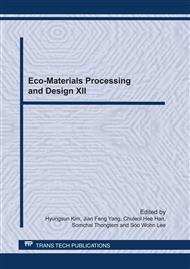p.77
p.81
p.85
p.89
p.93
p.97
p.101
p.105
p.109
Analysis of Fiber Filter Media after 6 Years of Use as a First Flush Filter
Abstract:
Pollutants in rainwater often cause problems such as non-point source pollutant and deterioration of collected water quality in rainwater harvesting systems. Fiber filter media have been developed to resolve these problems by removing pollutants in rainwater by filtration and ion-exchange mechanisms. They have been also successfully applied for the treatment of first-flush rainwater. However, little information is available on the long-term efficiency and the lifetime of the fiber filter media. In this study, new and used fiber filter media were compared in terms of their filterability and ion-exchange capability. The used filter media samples were taken from a first flush filter in a rainwater harvesting system located in an elementary school in Kyonggi-Do. They were used from 2005 to 2010 without any replacement or cleaning. Water quality parameters of an inflow and outflow in the first flush filter were analyzed to quantify the on-site treatment efficiency of the used media. It was shown that the turbidity was removed by approximately 60% and COD was partly removed. The removal efficiency of particles by the used media was similar to that by the new media. Nevertheless, the removal efficiencies of nitrogen and phosphorous by the used media were substantially reduced when compared with the new media. This suggests that the fiber filter media should be periodically replaced to maintain high removals of nutrients. On the other hand, they can be used for more than 6 years if their primary purpose is to removal particles.
Info:
Periodical:
Pages:
93-96
Citation:
Online since:
July 2011
Authors:
Keywords:
Price:
Сopyright:
© 2011 Trans Tech Publications Ltd. All Rights Reserved
Share:
Citation:


